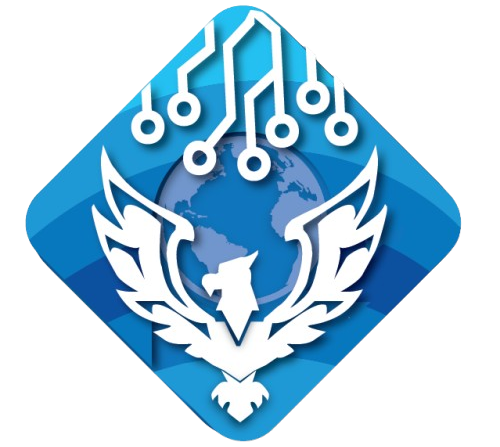In 2015, 13 percent of high school seniors reported prescription drug abuse. A 2012 report from the Substance Abuse and Mental Health Services Administration shows 28.1 percent of college-aged young adults reported misuse of prescription drugs at least once in their lifetime. With regard to patient selection and stratification, a drug addiction physician should routinely incorporate measures to assess risk for opioid abuse.
Rediscover Life at Carolina Center for Recovery
- Her role is to help our clients develop and improve their physical and mental health well-being.
- For example, although pain was found to be more likely amongst prescription opioid users compared to heroin users (Brands et al., 2004), chronic pain did not predict poorer outcomes for prescription opioid users receiving buprenorphine (Weiss et al., 2011).
- Many individuals who become addicted to stimulants begin using cocaine as an alternative or take the drug to chase a more intense high.
More complicated cases in terms of medical or psychiatric co-morbidity may be managed better in a detoxification or rehabilitation center, and cases where addiction is apparent are best referred to addiction specialists. Stratifying patients into risk categories for addiction liability will make it easier for a clinician to determine individualized treatment strategies, including the need for outside referrals 43. It is advisable for clinicians to employ universal precautions in order to triage individuals to different categories (low-, medium-, and high-risk) in terms of addiction liability 44. “OxyContin is very concerning because it’s an extremely powerful opioid agent. It’s a fantastic medication for people with serious pain. It’s just lifesaving for many people,” Compton says. Among the opioids, OxyContin, Vicodin, and Percodan are prescription drug abuse the most commonly abused, Compton says, although other types in this category are also misused. Typically, high school and college students abuse these drugs for different reasons, “both for what I consider typical drug abuse reasons, for its intoxicating or inebriating qualities, to feel good or feel high,” Compton says.

FOUNDATION SUPPORT
It is recommended to switch with a moderate reduction in the calculated equianalgesic dose 55. Research efforts to understand factors that influence vulnerability to addiction, as well as factors that predispose or protect against opioid abuse, are being funded through programs such as the National Institute on Drug Abuse (NIDA) 32. The effects of how genetic factors influence vulnerability to addiction in those exposed to pain medication are also of great interest to NIDA. With regard to stimulants, educational activity appears to predict the likelihood of non-medical use.

The Crisis of Drug Misuse and Federal Efforts to Address It

Ongoing research, targeted funding, and proactive policy shifts remain vital to making a lasting impact on America’s prescription drug abuse crisis. Over the past decade, numerous agencies – such as the Centers for Disease Control and Prevention (CDC), the U.S. Department of Health & Human Services (HHS), and the National Survey on Drug Use and Health (NSDUH) – have tracked prescription misuse patterns, overdose rates, and impacts on communities. Their data show that while some categories of misuse (such as opioids) have stabilized or even declined in certain metrics, emerging challenges continue to surface. This article presents the key statistics, trends, and underlying factors shaping prescription drug abuse in America today. By implementing education and awareness programs, promoting proper disposal practices, and providing access to support and treatment options, we can address the alarming trend of prescription drug abuse.
- Although the effects of a medication vary depending on the drug and the person taking it, there are signs and symptoms that could indicate abuse.
- Although certainly much more research is needed to understand the abuse of prescription opioids and stimulants–particularly given their prevalence–attention to other prescription drugs is also needed.
- Prescription drug misuse occurs when someone takes medication in a way that is different from how it was prescribed.
- Mason is detail oriented, organized, efficient oral and written communicator, and passionate about creating a positive workplace for our staff and an excellent recovery environment for our clients.
- College students are more likely to abuse stimulants than college-age young adults who are not enrolled in higher education, which is not consistent with other stimulants, such as cocaine (Johnston, O’Malley, Backman, & Schulenberg, 2013).
Further, opiate overdoses, once almost always due to heroin use, are now increasingly due to abuse of prescription painkillers. In our military, illicit drug use increased from 5% to 12% among active duty service members over a three-year period from 2005 to 2008, primarily attributed to non-medical use of prescription drugs. Preventing or stopping nonmedical use of prescription drugs is an important part of patient care. However, certain patients can benefit from prescription https://bozidesign.co.uk/2021/07/09/the-relationship-between-narcissism-and-alcoholism/ stimulants, sedatives, or opioid pain relievers. Therefore, physicians should balance the legitimate medical needs of patients with the potential risk for misuse and related harms.
- Preventing or stopping nonmedical use of prescription drugs is an important part of patient care.
- With the love and support of your family, and loved ones, we make sure to treat your addiction by understanding the root reasons behind it.
- Opioids are the most abused drug type, with addiction and overdose rates climbing annually.
- Public health experts emphasize the importance of secure medication storage, widespread availability of evidence-based treatments, and the continued expansion of social support networks.
The misuse of opioids — legal, illegal, stolen or shared — is the reason 90 people die in the U.S. every day on average, according to the American Society of Anesthesiologists. A strong correlation exists between prescription drug misuse and socioeconomic factors like employment and insurance. Beyond personal and family costs, prescription drug misuse exerts a heavy economic toll. Identifying specific drug classes that are commonly misused helps tailor educational campaigns, prescribing guidelines, and monitoring programs to the substances posing the greatest risks.


